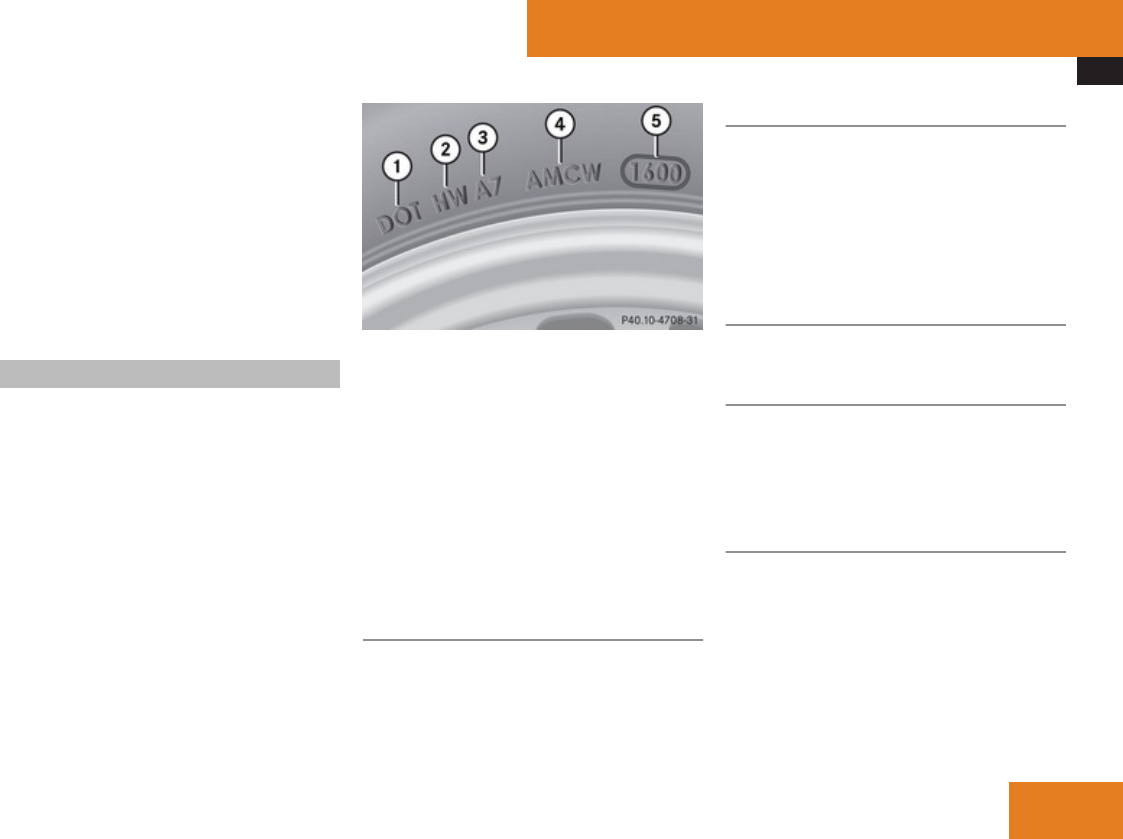
Tires and wheels
277
R
No specification given: absence of any text
(like in above example) indicates a
standard load (SL) tire.
R
XL or Extra Load: designates an extra load
(or reinforced) tire.
R
Light Load: designates a light load tire.
R
C, D, E: designates load range associated
with the maximum load a tire can carry at
a specified pressure.
DOT, Tire Identification Number (TIN)
U.S. tire regulations require each new tire
manufacturer or tire retreader to mold a TIN
into or onto a sidewall of each tire produced.
The TIN is a unique identifier which facilitates
efforts by tire manufactures to notify
purchasers in recall situations or other safety
matters concerning tires and gives
purchasers the means to easily identify such
tires.
The TIN is comprised of “Manufacturer’s
identification mark”, “Tire size”, “Tire type
code” and “Date of manufacture”.
1
DOT
2
Manufacturer’s identification mark
3
Tire size
4
Tire type code (at the option of the tire
manufacturer)
5
Date of manufacture
i
For illustration purposes only. Actual data
on tires are specific to each vehicle and
may vary from data shown in above
illustration.
DOT (Department of Transportation)
Tire branding symbol 1 denotes that the tire
meets requirements of the U.S. Department
of Transportation.
Manufacturer’s identification mark
Manufacturer’s identification mark 2
denotes the tire manufacturer.
New tires have a mark with two symbols.
Retreaded tires have a mark with four
symbols. For more information on retreaded
tires, see (Y page 260).
Tire size
Code 3 indicates the tire size.
Tire type code
Tire type code 4 may, at the option of the
manufacturer, be used as a descriptive code
for identifying significant characteristics of
the tire.
Date of manufacture
The date of manufacture 5 identifies the
week and year of manufacture.
The first two figures identify the week,
starting with “01” to represent the first full
week of the calendar year. The second two
figures represent the year.
Operation
Z


















